Abstract
In this study, pindolol, a beta-adrenoceptor blocking agent marketed as a racemic mixture, was used as a model compound to investigate stereoselective renal clearance of organic cations in human beings. Six normal subjects received an oral dose of 20 mg racemic pindolol. Heart rate and blood pressure were measured throughout the study. A stereospecific high performance liquid chromatographic procedure was used to quantitate the concentrations of d- and l-pindolol in plasma and urine. Renal clearance and other pharmacokinetic parameters of both enantiomers were calculated and compared. The renal clearance of l-pindolol was greater than that of d-pindolol in all subjects. The renal clearance (mean +/- SD) was 240 +/- 55 ml/min for l-pindolol and 200 +/- 51 ml/min for d-pindolol (P less than 0.01). Since stereoselective binding to plasma proteins was not observed, differences in renal clearance between d- and l-pindolol were caused by either stereoselective renal transport, or stereoselective renal metabolism. The area under the plasma concentration-time curve, the amount of drug excreted, and the half-life of l-pindolol were greater than those of d-pindolol, which suggests that pindolol was also eliminated stereoselectively by nonrenal routes. The slopes of the resting heart rate vs. the plasma concentration of l-pindolol were significantly less than zero and were significantly correlated to the pretreatment heart rate, which supports the hypothesis that intrinsic sympathetic tone largely determines the effect of pindolol on the resting heart rate. The observation that pindolol is eliminated stereoselectively by the kidney may have clinical implications for other racemic drugs that are renally eliminated.
Full text
PDF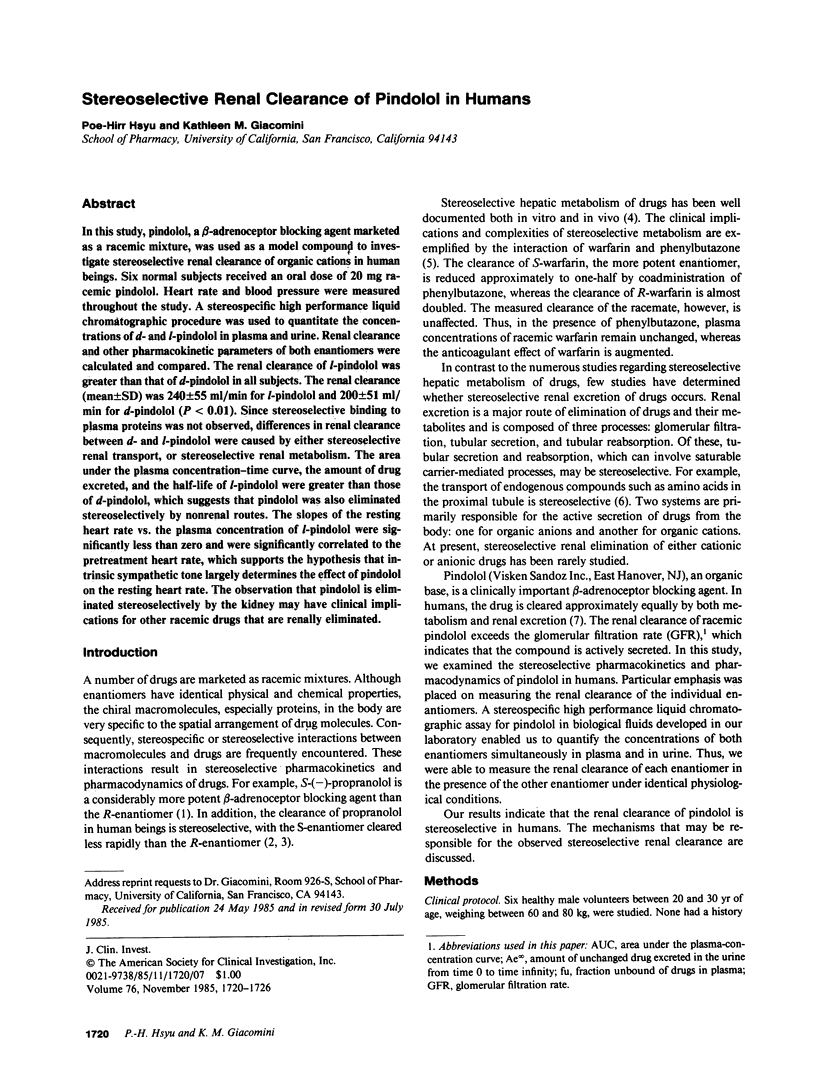
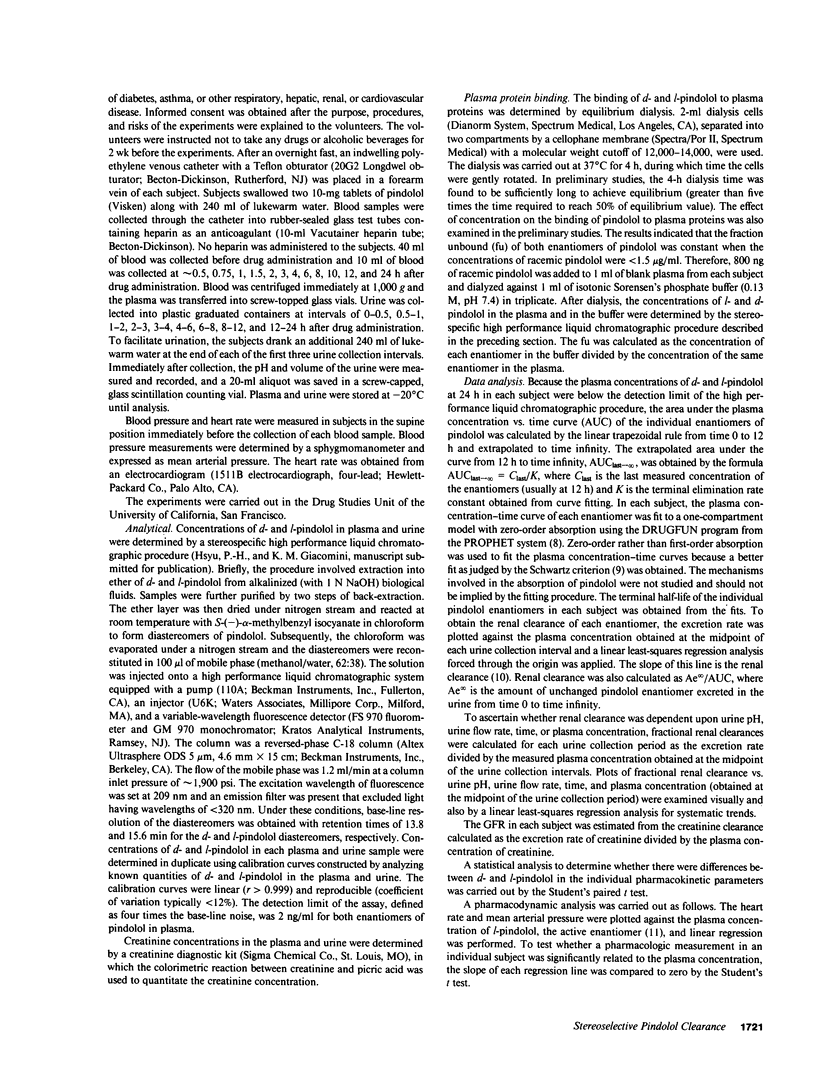
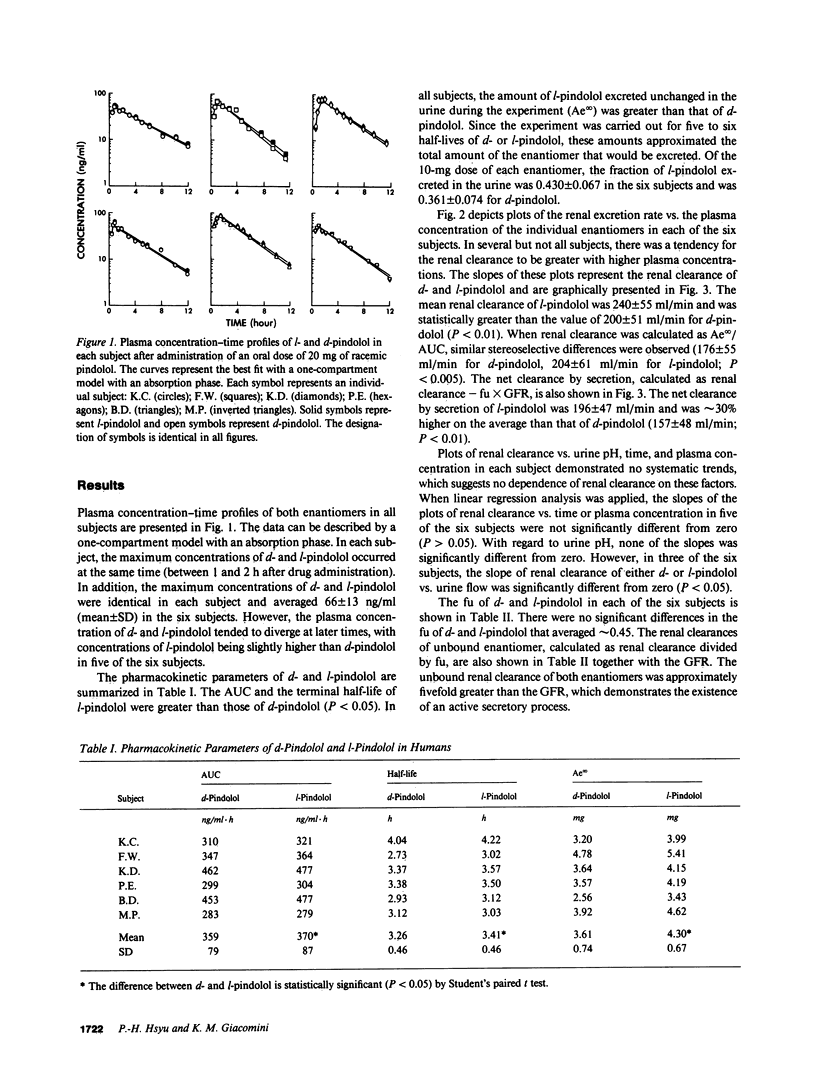
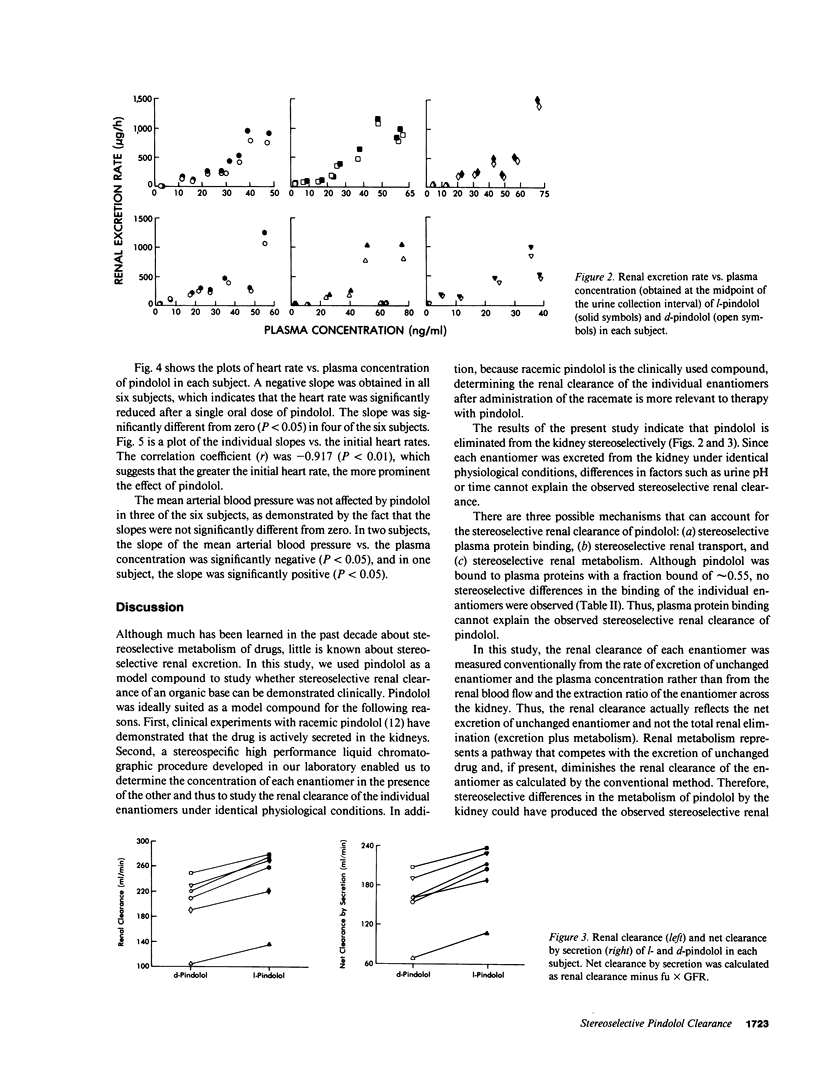
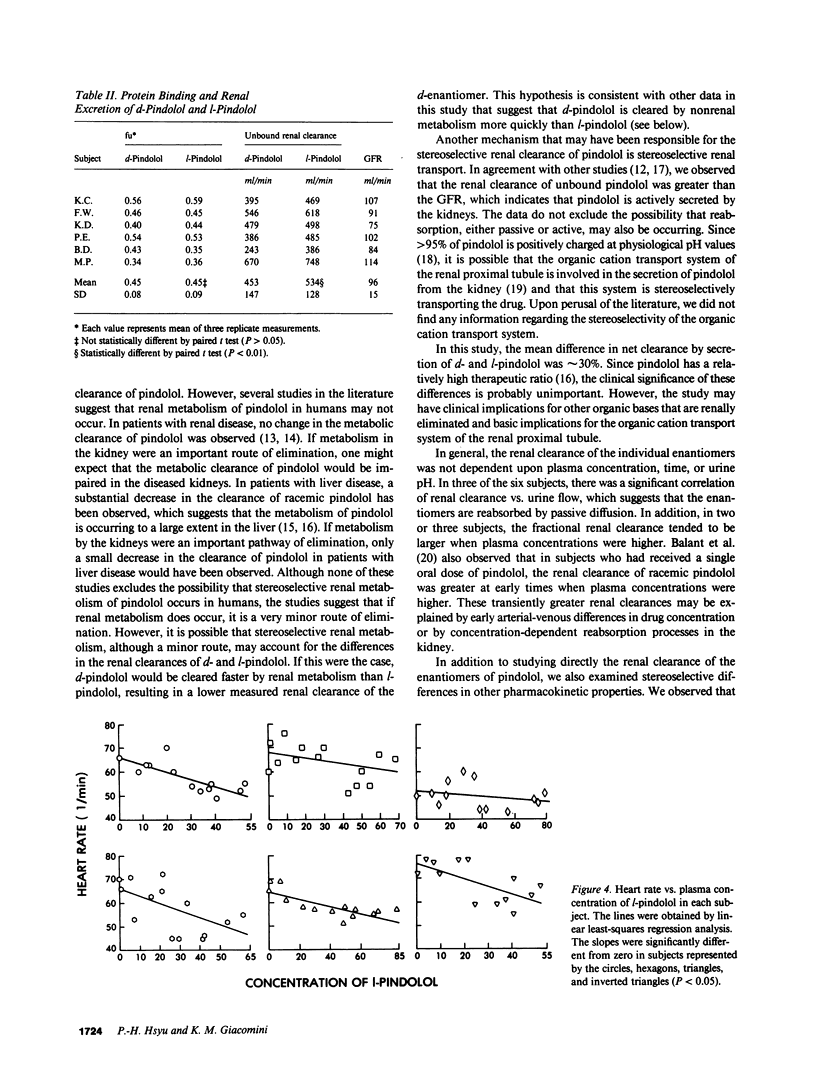
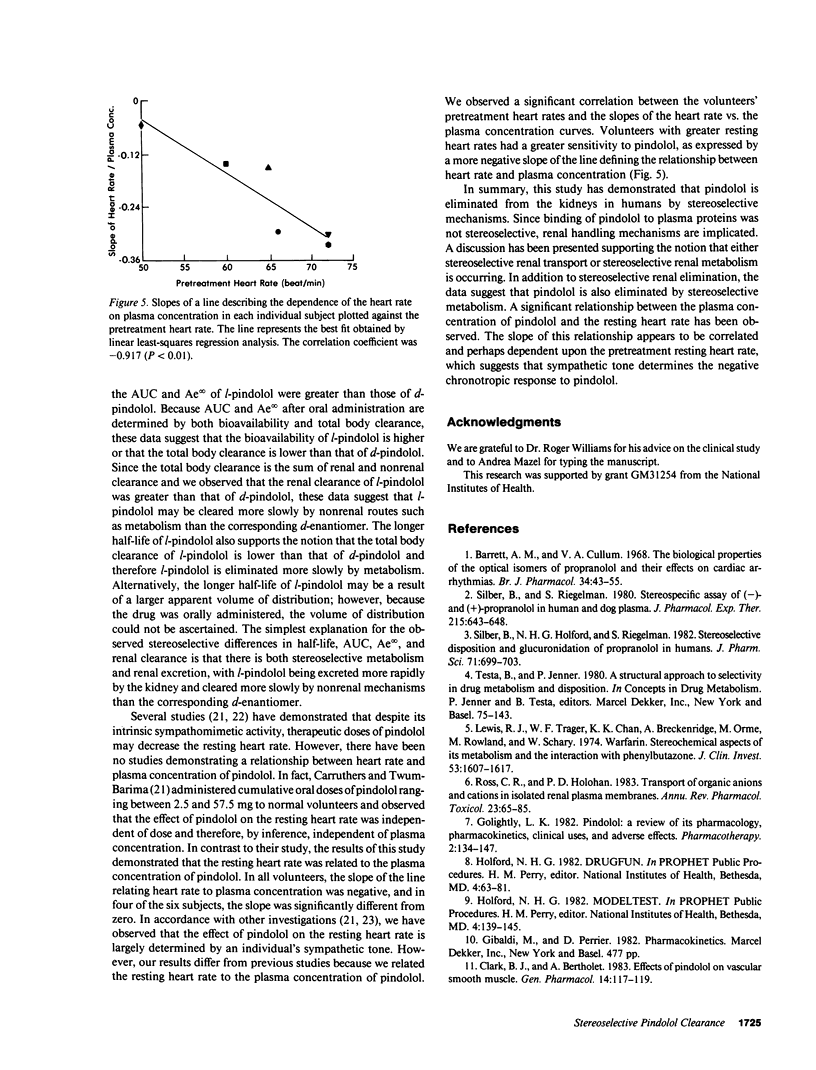
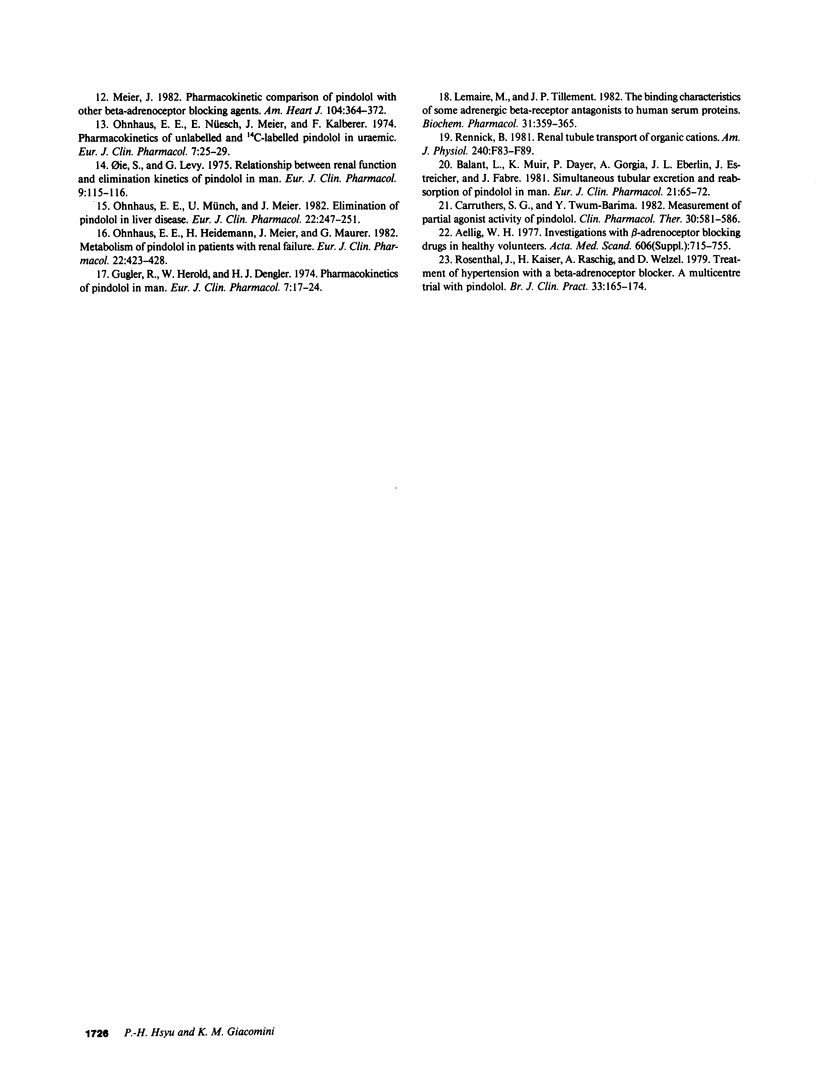
Selected References
These references are in PubMed. This may not be the complete list of references from this article.
- Balant L., Muir K., Dayer P., Gorgia A., Eberlin J. L., Estreicher J., Fabre J. Simultaneous tubular excretion and reabsorption of pindolol in man. Eur J Clin Pharmacol. 1981;21(1):65–72. doi: 10.1007/BF00609590. [DOI] [PubMed] [Google Scholar]
- Carruthers S. G., Twum-Barima Y. Measurement of partial agonist activity of pindolol. Clin Pharmacol Ther. 1981 Nov;30(5):581–586. doi: 10.1038/clpt.1981.207. [DOI] [PubMed] [Google Scholar]
- Clark B. J., Bertholet A. Effects of pindolol on vascular smooth muscle. Gen Pharmacol. 1983;14(1):117–119. doi: 10.1016/0306-3623(83)90078-2. [DOI] [PubMed] [Google Scholar]
- Golightly L. K. Pindolol: a review of its pharmacology, pharmacokinetics, clinical uses, and adverse effects. Pharmacotherapy. 1982 May-Jun;2(3):134–147. doi: 10.1002/j.1875-9114.1982.tb04521.x. [DOI] [PubMed] [Google Scholar]
- Gugler R., Herold W., Dengler H. J. Pharmacokinetics of pindolol in man. Eur J Clin Pharmacol. 1974;7(1):17–24. doi: 10.1007/BF00614385. [DOI] [PubMed] [Google Scholar]
- Lemaire M., Tillement J. P. The binding characteristics of some adrenergic beta-receptor antagonists to human serum proteins. Biochem Pharmacol. 1982 Feb 1;31(3):359–365. doi: 10.1016/0006-2952(82)90183-6. [DOI] [PubMed] [Google Scholar]
- Lewis R. J., Trager W. F., Chan K. K., Breckenridge A., Orme M., Roland M., Schary W. Warfarin. Stereochemical aspects of its metabolism and the interaction with phenylbutazone. J Clin Invest. 1974 Jun;53(6):1607–1617. doi: 10.1172/JCI107711. [DOI] [PMC free article] [PubMed] [Google Scholar]
- Meier J. Pharmacokinetic comparison of pindolol with other beta-adrenoceptor-blocking agents. Am Heart J. 1982 Aug;104(2 Pt 2):364–373. doi: 10.1016/0002-8703(82)90127-2. [DOI] [PubMed] [Google Scholar]
- Ohnhaus E. E., Heidemann H., Meier J., Maurer G. Metabolism of pindolol in patients with renal failure. Eur J Clin Pharmacol. 1982;22(5):423–428. doi: 10.1007/BF00542547. [DOI] [PubMed] [Google Scholar]
- Ohnhaus E. E., Münch U., Meier J. Elimination of pindolol in liver disease. Eur J Clin Pharmacol. 1982;22(3):247–251. doi: 10.1007/BF00545223. [DOI] [PubMed] [Google Scholar]
- Ohnhaus E. E., Nüesch E., Meier J., Kalberer F. Pharmacokinetics of unlabelled and 14C-labelled pindolol in uraemia. Eur J Clin Pharmacol. 1974;7(1):25–29. doi: 10.1007/BF00614386. [DOI] [PubMed] [Google Scholar]
- Oie S., Levy G. Relationship between renal function and elimination kinetics of pindolol in man. Eur J Clin Pharmacol. 1975 Dec 19;9(2-3):115–116. doi: 10.1007/BF00614006. [DOI] [PubMed] [Google Scholar]
- Rennick B. R. Renal tubule transport of organic cations. Am J Physiol. 1981 Feb;240(2):F83–F89. doi: 10.1152/ajprenal.1981.240.2.F83. [DOI] [PubMed] [Google Scholar]
- Rosenthal J., Kaiser H., Raschig A., Welzel D. Treatment of hypertension with a beta-adrenoceptor blocker. A multicentre trial with pindolol. Br J Clin Pract. 1979 Jun;33(6):165-74, 181. [PubMed] [Google Scholar]
- Ross C. R., Holohan P. D. Transport of organic anions and cations in isolated renal plasma membranes. Annu Rev Pharmacol Toxicol. 1983;23:65–85. doi: 10.1146/annurev.pa.23.040183.000433. [DOI] [PubMed] [Google Scholar]
- Silber B., Holford N. H., Riegelman S. Stereoselective disposition and glucuronidation of propranolol in humans. J Pharm Sci. 1982 Jun;71(6):699–704. doi: 10.1002/jps.2600710623. [DOI] [PubMed] [Google Scholar]
- Silber B., Riegelman S. Stereospecific assay for (-)- and (+)-propranolol in human and dog plasma. J Pharmacol Exp Ther. 1980 Dec;215(3):643–648. [PubMed] [Google Scholar]


